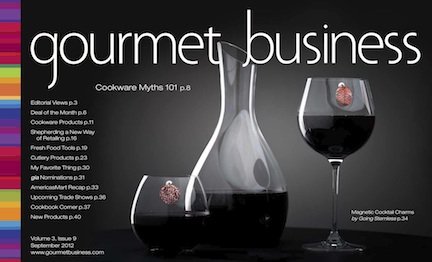
Demystifying Cookware
Like many in the industry, I love food – love to shop for it, cook it and eat it. I adore watching other people cook, sharing recipes and exchanging tips. All of this, of course, feeds my insatiable interest in kitchen gadgetry and cookware. But I have to admit, when I shop around and compare one piece of cookware with another, and try to identify which is best suited for certain types of cooking, which heats more evenly or maintains heat better, which are truly nonstick and which nonstick is healthier for you, the field is confusing.
And it’s often near impossible to get solid coaching from store personnel unless you are in smaller specialty shops with more expert help. But I think even gourmet and specialty housewares retailers can step up their expertise further, or at the very least, trumpet that knowledge more readily to customers and help them demystify manufacturers’ competing claims, and help debunk customers’ long-held myths and misinformation. I know I am not the only one scratching my head over cookware. When we discussed cookware trends in a recent editorial meeting planning this issue, we all seemed to have different impressions of the prowess of one type of cookware over another, and our own individual biases and attachments bubbled up.
So, the mission of our cookware feature this month became self-evident – we needed to demystify cookware and go beyond the typical primer. We needed to dig into the myths, facts and fallacies, as well as explore new cookware technology on the market, and that’s exactly what Jennifer White Karp did in her feature, “Cookware Myths 101,” page 8. Jennifer covers everything from nonstick and ceramic to stainless steel and cast iron, and then rounds it off with her selection of new cookware products on the market.
This month, Jennifer also put on her locavore hat and crafted a wonderful profile on Valley Shepherd Creamery, a New Jersey dairy farm, which uses traditional European cheesemaking methods and directly operates specialty stores in Long Valley, N.J., Brooklyn, N.Y., and a soon-to-be-opened store at Philadelphia’s Reading Terminal Market (page 16). “When I need cheese, I communicate with the cheesemaker, and he pulls it from the cave and someone drives it over from the farm. I get it the next day,” said Samantha Safer, the New York store operations manager.
Now that’s what I call fresh, boutique and local.

